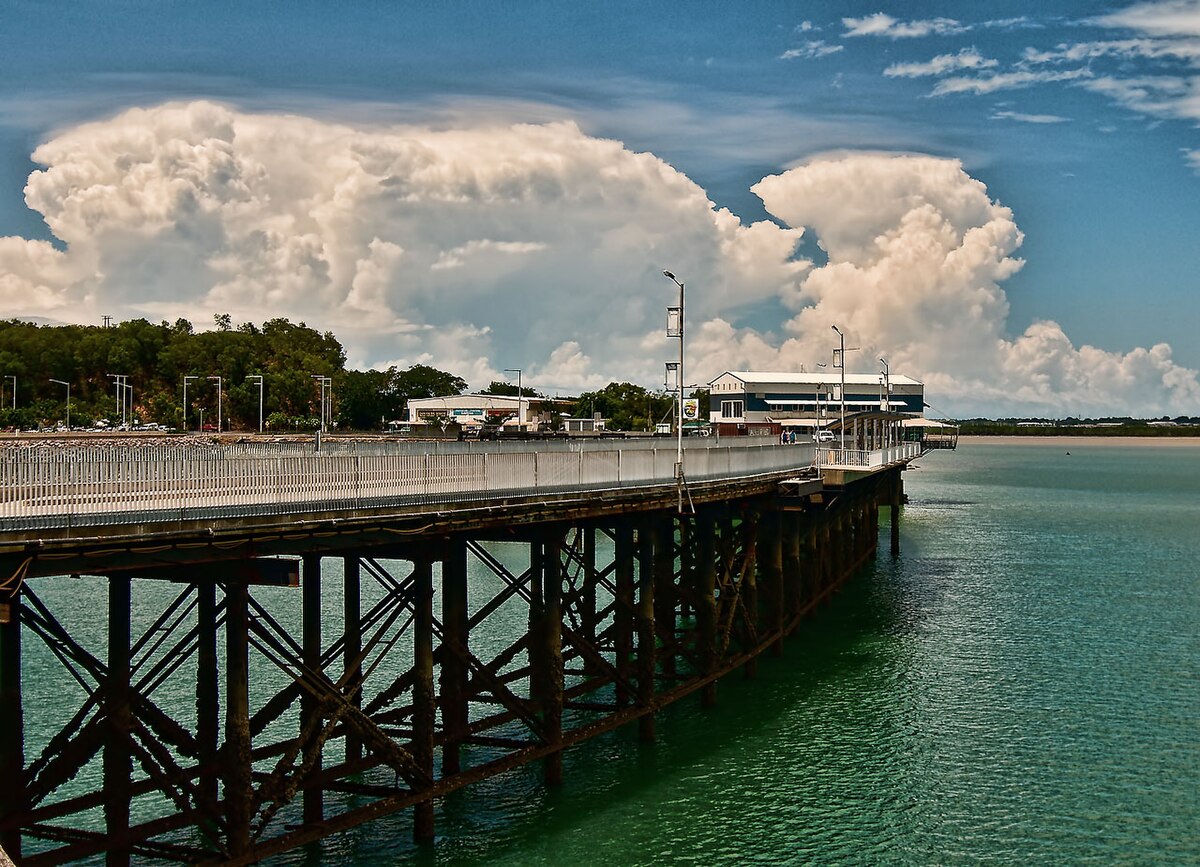Named by pilots during the Second World War, the recurring position of the thunderstorm made it a navigational beacon for pilots and mariners in the region. A mesoscale phenomenon, Hector is caused primarily by a collision of several sea breeze boundaries across the Tiwi Islands and is known for its consistency and intensity. Lightning flash rates and updraft speeds are notable aspects of this thunderstorm and during the 1990s National Geographic magazine published a comprehensive study of the storm with pictures of damaged trees and details of updraft speeds and references to tornadic events. The consistency of the phenomenon is caused by frequently occurring atmospheric conditions due to the sea and due to topography, and the underlying atmospheric environment constitutes a distinct microclimate (which are common with islands, especially ones exhibiting significant topographic relief).
Since the late 1980s the thunderstorm complex has been the subject of many meteorological studies, many centred on Hector itself, but also utilising the consistency of the storm cell to study other aspects of thunderstorms, lightning, atmospheric boundaries, and marine and terrain effects on the atmosphere.
Anyone want to run the maths on an afternoons lightning as renewable energy?
Uhh… roughly 30 strikes per minute, over 6 hours would be 10k lightning strikes, at 300 million volts and about a billion joules a pop… If you could convince the thunderstorm to only strike your collection device, and you could store it usefully, uhhh
It’s like… 3000 megawatt hours. A little less than that. Which is pretty substantial. A city in Australia or about a million people would use about half that amount in a day.
Buuuuuuut: that assumes 100% conversation of energy in a lightning bolt to energy in the system, that’s frankly not remotely possible. You’d be lucky to capture 10% usefully.
The issue is probably storage, you can’t use up all that electricity right away and it’s probably hard to store it nicely
Although I’m not an engineer, just taking a wild guess. Maybe the lightning can be redirected into something to do something else (heat water etc.).
I love the human tendency to anthropomorphize things. Hector seems chill.
All my homies are down with a little afternoon convection.
It’s like Karl the Fog’s fun cousin from Down Under!
No mention of any variability in recent times, so it must be incredibly stable conditions for climate change to have not affected its formation.
deleted by creator








